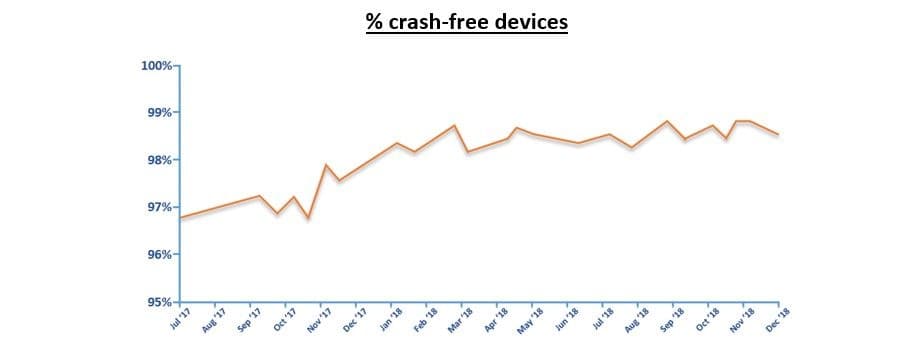by Martin Brinkmann on December 20, 2018 in Windows – 6 comments
Microsoft revealed last month that the Windows 10 update quality improved a lot since the release of the operating system in July 2015.
The article was published as part of a series of articles to improve transparency in regards to updates for Windows.
Michael Fortin, Corporate Vice President, Windows and Tom Frankum, Director of Data and Intelligence, Windows, published a new article of that series yesterday on the Windows Experience blog.
Driver quality in the Windows ecosystem looks at the distribution and quality of drivers using Windows Update. Driver installation through Windows Update caused significant issues in the past, e.g. when old drivers were offered even though newer versions were installed already or when drivers were offered that were not designed for the particular hardware device.
Tip: you can disable driver updates through Windows Updates.
The driver distribution change starts at Independent Hardware Vendors (IHV) such as AMD, Intel, or NVIDIA. These test hardware components they develop; part of the testing involves making sure that the hardware is compatible with supported versions of Windows.
Vendors use the Windows Hardware Lab Kit to automate testing processes and may offer drivers for the hardware components on their websites.
Original Equipment Manufacturers are next in the chain. Companies like Dell, Lenovo or Asus, run tests to ensure that drivers work in their devices. These companies work hand in hand with IHVs to address any issues discovered during testing.
Validated drivers are released on the OEMs websites and through updating tools if provided.
Microsoft is last in the driver distribution chain. IHVs and OEMs submit drivers to Microsoft for inclusion via Windows Update.
IHVs and OEMs submit drivers to Microsoft, and we flight these drivers within our engineering system and, eventually, to Windows Insiders.
Drivers are approved or rejected based on metrics during these flights. Microsoft revealed that it tests more than 100 drives every single day.
Windows Driver quality

Fortin and Frankum reveal that driver quality has gone up in recent time. One of the graphs posted shows the percentage of crash-free devices from July 2017 to December 2018. The value was just below 97% in July 2017 and has gone up to more than 98% in November 2018.
While that means that more than 98% of devices did not experience crashes in that particular month, it still means that more than 1% of devices crash because of drivers. In other words: millions of Windows 10 devices crash each month because of driver issues.
Microsoft published a second graph that compares crashes between August 2016 and September 2017.

Microsoft states that it saw “significant improvement”. The graph is problematic as we cannot put the values from 2016 and 2017 in correlation because of missing x-axis and y-axis values.
We don’t know if driver crashes dropped by 10%, 1%, 0.1% or 0.00001% between 2016 and 2017.
Microsoft admits that “there is more work” to be done.
Now You: How do you install drivers? What’s your take on the claim?